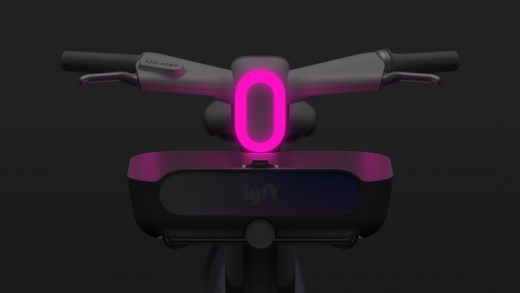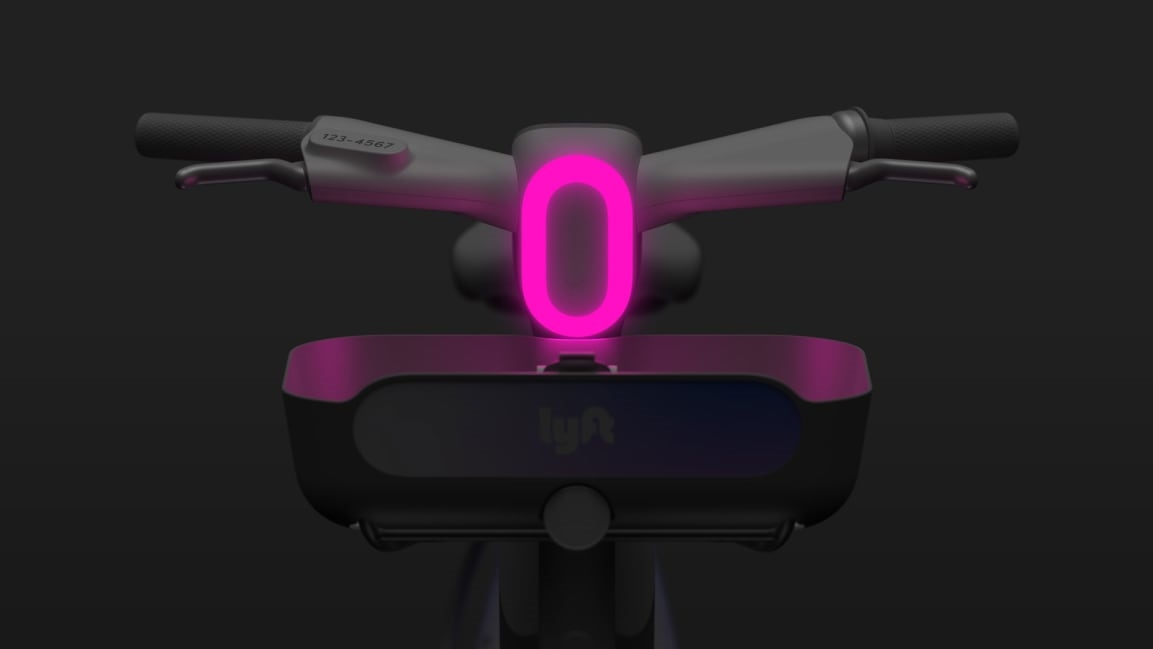Lyft just built a better e-bike for urban sharing
In pre-COVID-19 times, I worked in downtown San Francisco and was surrounded by people pedaling around on Lyft e-bikes—and never paid them much attention or gave serious thought to getting on one myself. Then a funny thing happened: I bought my own e-bike to help me shake off pandemic lethargy, and found that I loved it. And since I live too far into suburbia to consider commuting to my office on two wheels, I started looking forward to using Lyft’s bike-sharing service once I returned to the city.
While I was getting intrigued by Lyft’s e-bikes, the company was busy creating its next-generation model—the first one it’s designed itself, after previously using e-bikes from a company called GenZe. I got to take a spin on one of the new bikes last week; more will hit the streets of San Francisco this week in a beta test, with the official rollout starting in Chicago this fall. Over time, this model will gradually replace Lyft’s current e-bikes, which comprise anywhere from 20% to 100% of its fleet depending on the market. (Between electric and conventional bikes, Lyft is the largest bike-share operator in North America.)
For Lyft, designing its own e-bike started with assembling the necessary talent, which operates out of a workshop—warehouse in San Francisco and uses the environs as a proving ground. “We built this really amazing world-class design team that is passionate about micro-mobility and has a wide background from consumer electronics and everything with wheels,” says head of industrial design Oli Mueller, whose own résumé includes four years of experience working on smart-home products at Nest.
The goals of this team did not include reinventing the experience of using one of its bikes in a way that might flummox current happy customers. So even though the new bike is new from the ground up, it doesn’t feel that new. “When you take a step back, it looks kind of the same, kind of different,” says Gary Shambat, Lyft’s product lead for bikes and scooters. “And that’s purposeful.”
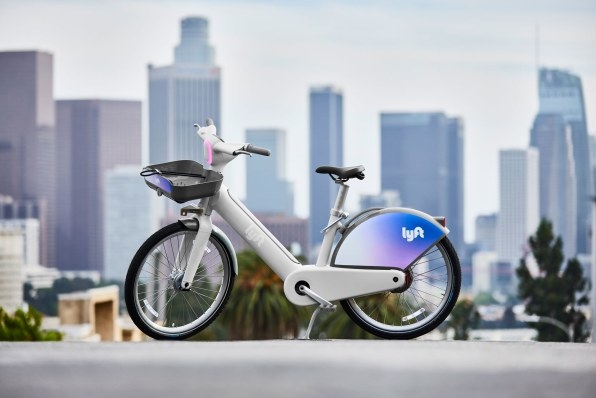
[Image: courtesy of Lyft]
It also turns out that many of the touches that make an e-bike suitable for sharing aren’t glaringly obvious. They relate more to eliminating obstacles that might prevent people from using a bike—because it doesn’t fit them, can’t accommodate their stuff, or is just plain out of service.
For example, the new bike’s seat can be lowered by an additional three inches—using a more accessible unlocking mechanism—which is a boon to shorter riders. The front-mounted basket’s backside is now closed rather than open—which should lessen the chances of your possessions taking a tumble—and its strap has been redesigned to facilitate securing bulky items such as groceries. There’s a new monochrome screen, but its primary purpose is to display helpful information before and after a ride rather than to do anything that might be distracting in transit. And Lyft learned from its experience with its current bikes to address problem areas that require e-bikes to be taken out of service for repair.
Instead of a battery mounted externally on the downtube, the new bike sports one embedded inside the tube. Beyond the more elegant look, the battery has doubled in capacity from 500 watt-hours to 1,000 watt-hours—enough juice, Lyft says, for up to 60 miles of range, depending on factors such as the rider’s weight and how many hills the bike climbs. Not that any individual is likely to go anything like that distance; typical trips are more like a 1.5 to 2 miles. But the bigger the battery, the less often it needs to be charged, increasing a bike’s availability. (The Lyft app indicates the current range of each e-bike.)
The beefier battery presumably helps explain why the new bike, at 84 pounds, is even heavier than the old 72-pound model—figures which may flabbergast anyone who’s only familiar with far lighter conventional bikes. Still, the fact that a motor is helping to propel you along makes weight less critical for an e-bike. According to Lyft, the new design’s improved motor and lower center of gravity also make this e-bike ride as if it were lighter than the previous one.
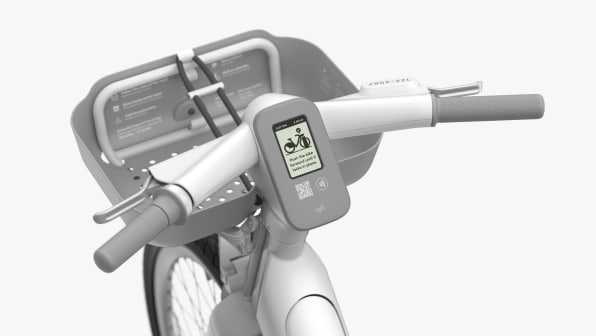
[Image: courtesy of Lyft]
More than poundage, the new Lyft e-bike’s riding experience is defined by the fact that it’s essentially an electrified cruiser, with a single gear and no ability to adjust the degree of electrified assistance you get. That gives you less control than most e-bikes designed to be sold to individuals, which typically offer multiple gears and levels of assistance, allowing you to fine-tune your ride on the fly for comfort, power, or speed. (From a technical standpoint, the new model is a Class 1 e-bike, which means that the motor provides a boost at speeds up to 20 miles per hour—local regulations permitting—and only kicks in when you’re pedaling.)
On my test trip, the one-size-fits-all ride was somewhat plodding, and conquering hills, though doable, wasn’t as painless as on my own nine-speed Gazelle e-bike. Of course, Lyft probably doesn’t want to optimize its e-bike for speed freaks. And the advantage of reducing control is that there’s nothing to learn. With Lyft’s custom powertrain and controller, “we can actually make a very seamless experience, so that you don’t have to constantly fidget and adjust and switch out your speed, one, two, three, as you’re going up a hill or from a stop sign,” says Shambat.

Safety first
Every e-bike has all the same safety challenges as its conventional predecessors plus some new twists—a fact that led to two interruptions in Lyft’s e-bike service soon after it began. In April 2019, the company temporarily pulled e-bikes from its fleet when some customers reported being flung over their handlebars after braking. A few months later, it briefly took some of the cycles out of commission again after two battery fires in San Francisco.
When this bike is passing, you’ll see it shimmer.”
Gary Shambat, Lyft
Safety is also the goal of the new e-bikes’ paint job. Lyft is using a custom-engineered retroreflective paint—white for the beta bike I rode, and a light gray for production models—that, like the surface of a stop sign, bounces back light such as from a car’s headlights for maximum visibility. “When this bike is passing, you’ll see it shimmer,” promises Shambat. Along with the headlight, there’s also a new handlebar-mounted oval ring of light in Lyft’s signature pink; Shambat says that it “will just light up the bike at night.”
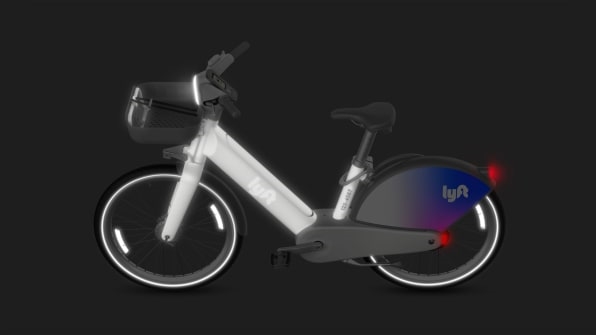
[Image: courtesy of Lyft]
From the more adjustable seat to the reflective paint, most of what’s new about Lyft’s new e-bike serves the higher mission of increasing the number of people who get around their cities via shared bikes. It’s “a big challenge, definitely, to have all these different riders and all these different cities and all these different weather conditions,” says Mueller, who acknowledges that while San Francisco is well equipped with bike lanes, “there are areas like Miami that have no bike lanes at all. And even here in the Bay Area, when you don’t ride in the bike lanes, it’s quite scary.”
In the end, Shambat says, “we want people to hop on and just ride.” Starting this week in San Francisco, they will—and what Lyft learns will help prep it for the time when this e-bike is as familiar a presence in the company’s bike-share markets as the current model.
(52)

